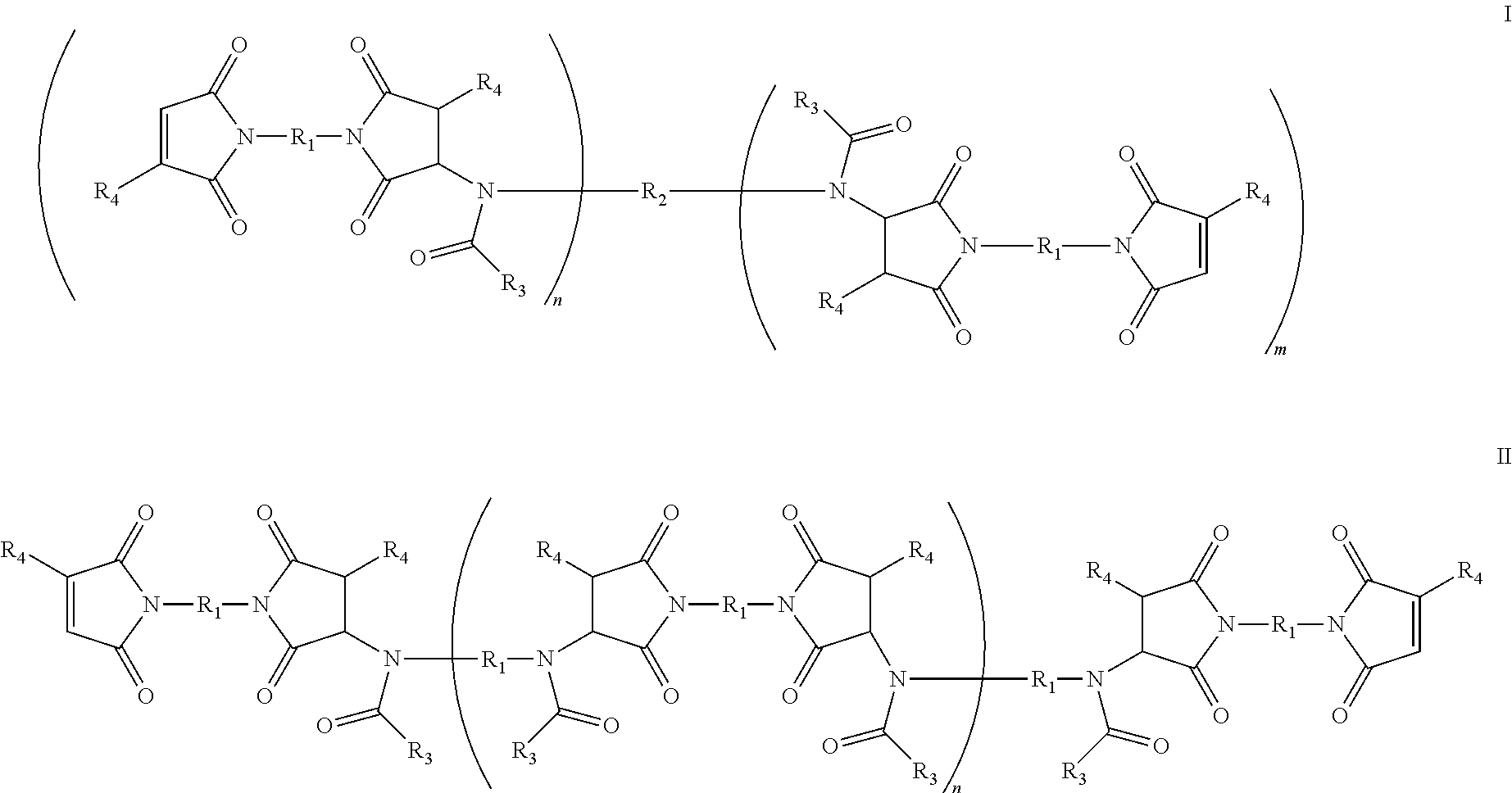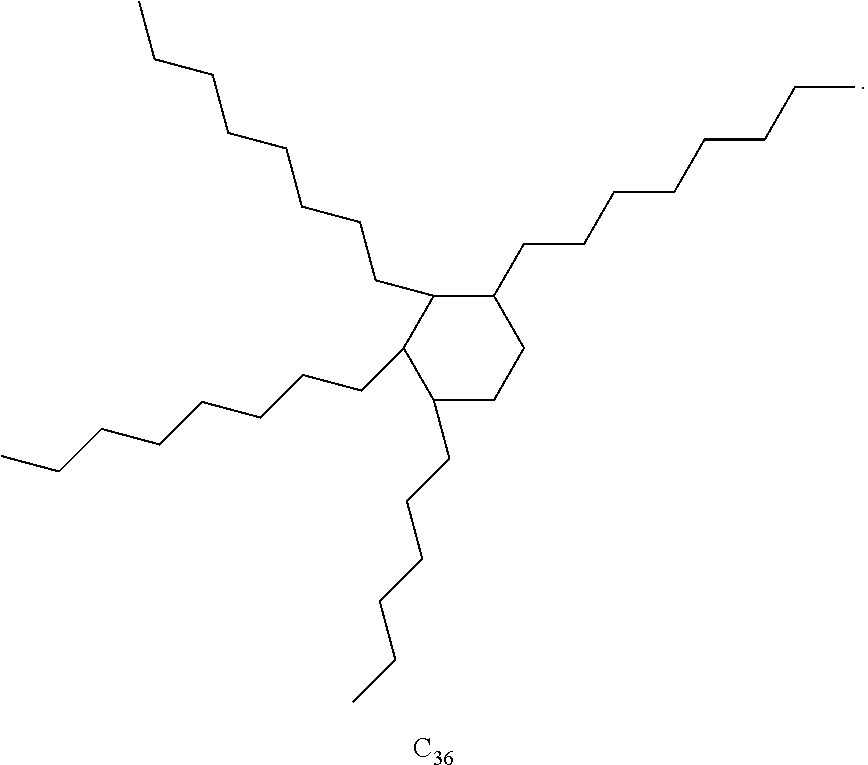Amide-extended crosslinking compounds and methods for use thereof
a crosslinking compound and compound technology, applied in the direction of adhesives, silicon organic compounds, group 4/14 element organic compounds, etc., can solve the problems of reducing the toughness of bmi resins, reducing the toughness of amide, so as to increase the toughness and/or thermal stability of amide-containing compositions, increase the toughness of monomer-containing compositions, and increase the toughness of compositions
- Summary
- Abstract
- Description
- Claims
- Application Information
AI Technical Summary
Benefits of technology
Problems solved by technology
Method used
Image
Examples
example 1
Synthesis of Compound 1
[0189]
[0190]Maleic anhydride (21.6 g, 220 mmol) was dissolved in toluene (150 ml). To this solution was added methylene-1,1-bis(2,6-diethylaniline) (Lonzacure®, 31 g, 100 mmol available from Lonza Group of Switzerland) over a 10 minute period. The solution appeared orange immediately, then changed to a cherry red as the diamine continued to be added. The solution then became bi-phasic with the lower phase becoming a thick amber liquid and then setting up to a purple-gray solid. Methanesulfonic acid (2.5 g) was added. The solution was refluxed for about 90 minutes and 3.6 ml water was collected in a Dean-Stark trap. The reaction solution at this point appeared yellow-orange. The solution was washed with sodium bicarbonate, then treated with MgSO4 and passed over SiO2. Removal of toluene by rotary evaporation afforded the corresponding bismaleimide in 96% yield. The BMI compound was subjected to thermogravimetric analysis (TGA). The retained weight at 300° C. (T...
example 2
Synthesis of Compound 2
[0193]
[0194]The bismaleimide 1,3-bis(3-maleimidophenoxy)benzene (available from Mitsui Corp. of Japan, 22.6 g, 50 mmol) was dissolved in toluene (50 ml). Versamine® 552 (13.4, 25 mmol) was added over a 15 minute period and the solution was refluxed for one hour. Acetic anhydride (5.1, 50 mmol) was added and the mixture was refluxed for an additional hour. The toluene was removed by rotary evaporation and sparging and the product was then dried in an oven for 4 days at 80° C. The retained weight via TGA at 300° C. (TGA ramp rate=10° C. / min., air purge) was 98.9%, and the decomposition onset was at 426° C. An FTIR was run on the final compound and it was found to have major absorptions at 2925, 2853, 1717, 1590, 1479, 1381, 1241, 1150, 827, and 698 wavenumbers.
example 3
Synthesis of Compound 3
[0195]
[0196]The bismaleimide described in EXAMPLE 1 (11.8 g, 25 mmol) and methylene-1,1-bisphenylmaleimide (8.9 g, 25 mmol; Sigma-Aldrich, St Louis) were dissolved in refluxing toluene (100 ml). The mixture was cooled to 50° C. and Versamine® 552 (13.4 g, 25 mmol) was added over a 10 minute period. The mixture was refluxed for one hour. Acetic anhydride (5.1 g, 50 mmol) was added and the mixture was refluxed for an additional hour. The toluene was removed by rotary evaporation and sparging and the product was dried for 4 days at 80° C. The decomposition onset C (TGA, ramp rate=10° C. / min., air purge) was at 429.3° C. An FTIR was run on the final compound and it was found to have major absorptions at 2923, 1713, 1623, 1377, 1153, 828, and 692 wavenumbers.
PUM
| Property | Measurement | Unit |
|---|---|---|
| Temperature | aaaaa | aaaaa |
| Temperature | aaaaa | aaaaa |
| Mass | aaaaa | aaaaa |
Abstract
Description
Claims
Application Information
 Login to View More
Login to View More - R&D
- Intellectual Property
- Life Sciences
- Materials
- Tech Scout
- Unparalleled Data Quality
- Higher Quality Content
- 60% Fewer Hallucinations
Browse by: Latest US Patents, China's latest patents, Technical Efficacy Thesaurus, Application Domain, Technology Topic, Popular Technical Reports.
© 2025 PatSnap. All rights reserved.Legal|Privacy policy|Modern Slavery Act Transparency Statement|Sitemap|About US| Contact US: help@patsnap.com



